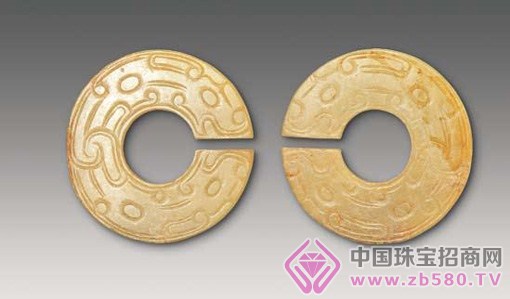Is there a Xia Dynasty in Chinese history? Despite the skepticism of many foreign scholars, Chinese scholars almost unanimously affirmed its existence. The Erlitou culture, represented by the Erlitou site in Henan Province, not only clearly entered the early bronze civilization, but also its carbon four-year dating and geographical distribution coincided with the spatial and temporal characteristics of the summer recorded in the literature, so it became Explore the main objects of summer culture, and the Erlitou site is also considered the capital of the Xia Dynasty. Erlitou culture jade inherits the peak of the production and use of jade in the late Neolithic period. The prelude to the Shang Zhouyu culture in the Bronze Age not only brings together the factors of many prehistoric cultural jade, but also absorbs different jade. Tradition, and on the basis of the strength of the family, has formed its own distinctive features. It is known that the Erlitou culture jade has handles, knives, knives, knives, knives, knives, gums, gems, hoes, shovel, hoes, chisels, hoes, spinning wheels, hoops, rings, cymbals, More than 20 kinds of enamel, pendant, tube, bell tongue, etc. Among them, the gingiva that has appeared in the Longshan era has evolved further into the Erlitou culture period, especially the fangs and fangs have evolved from “symmetric multi-pointed†to more complex forms. The archaeologist Zheng Guang once called the decoration of the fangs of Erlitou's gingiva as "the beast head of the mouth." Deng Cong thinks that the beast of the mouth-shaped beast is a dragon, so the abbreviated fangs with such fangs are called "dragon gingiva". In 1980, two pieces of gums were unearthed at the No. 3 tomb of Erlitou Site, all of which belonged to “Dragon's Toothâ€. One of the largest shapes is the largest of the Erlitou culture gums. The other shape is similar but slightly smaller. The two gingiva are well-formed, and the surface of the blue-gray body is painted with cinnabar, which is a vermilion, which implies a special etiquette process and meaning. As one of the most representative shapes in the Erlitou culture jade, "Dragon's Tooth" has formed a strong radiation and influence on the surrounding areas with a strong posture. The gums unearthed from the sites of Henan Xinzheng Wangjing Building, Sichuan Guanghan Sanxingdui and Vietnam XomRen are in line with it, showing the extraordinary influence of the Erlitou culture gums and gum burial system. This kind of tolerance and energy that can absorb and blend strongly, fully demonstrates the strong and core position of Erlitou culture in the same period. In fact, since then, until the early Spring and Autumn Period, the Central Plains region has been playing a leading role in the wave of homogenization of Chinese jade culture. During the Erlitou culture period, the Chinese society was experiencing profound and profound changes. It gradually moved from the regional culture groups that were originally starry and balanced, to the era of Central Plains culture. As one of the most active cultural factors of this period, Jade is of course a barometer of this social change and entering a new era. Regardless of the multi-dimensional convergence of the "wanbang jade" type in the development of the model, the mature and regularity of the flaky jade ritual weapons such as Ge, Knife, Skull and Gum, are also bronze and jade, such as the copper tongue of the jade tongue and the turquoise bronze medal. The conscious combination of "strategic" resources, the Erlitou culture jade are firmly grasping the pulse of the new era. V Neck Jumpsuit,Stripe Jumpsuit,Iron Silver Jumpsuit,Black Shine Fabric Jumpsuit SHAOXING YINBO IMP&EXP CO.,LTD , https://www.yinbotex.com